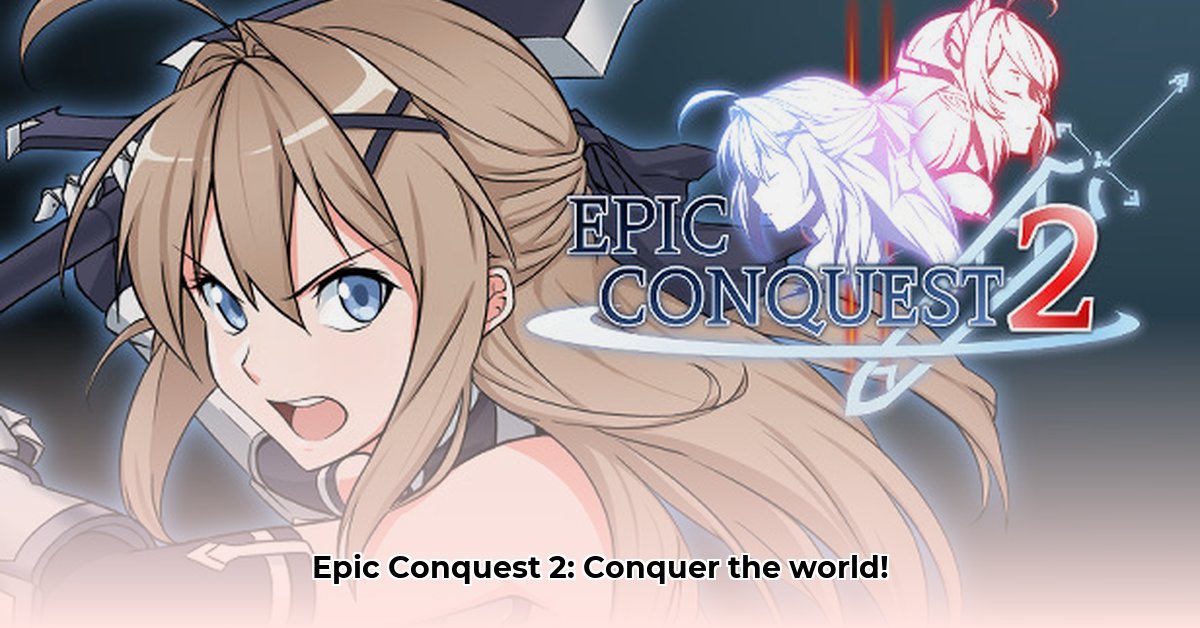
Epic Conquest 2: A Deep Dive into an Indie Success Story
Epic Conquest 2, the sequel to the popular mobile game, represents a compelling case study in indie game development and monetization. Its transition from a freemium mobile title to a Steam Early Access PC game showcases a strategic shift aimed at broadening its audience and enhancing player experience. This analysis explores the key elements contributing to its success, focusing on gameplay evolution, community engagement, and its evolving monetization strategy.
From Mobile to PC: A Strategic Shift
The original Epic Conquest thrived on mobile platforms with a freemium model. However, Epic Conquest 2's move to Steam Early Access demonstrates a calculated risk, targeting a different player base with different expectations. While both games share core elements—fast-paced combat, character upgrades, customizable gear—Epic Conquest 2 aims for a more polished and challenging experience. This strategic shift is bolstered by direct player feedback, allowing the developers to adapt and refine the game throughout its development cycle. Is this gamble paying off? Early indicators suggest a positive response.
The Power of Community Engagement
Epic Conquest 2's success is intrinsically linked to its commitment to community engagement. Steam Early Access facilitates direct interaction with players, enabling the developers to receive immediate feedback, address bugs effectively, and balance gameplay according to player preferences. This iterative development process ensures the game evolves alongside its community, fostering a sense of ownership and loyalty among players. This constant feedback loop however, presents the challenge of carefully balancing player suggestions against the developers’ creative vision and maintaining core game mechanics appreciated by the established player base.
Monetization: A Delicate Balancing Act
Epic Conquest 2's monetization strategy differs significantly from its predecessor. While the original utilized a freemium model, the sequel explores a more nuanced approach, potentially adjusting prices for new content and features. This presents inherent risks, as striking a balance between player satisfaction and financial viability is crucial for long-term success. Will the new approach maintain player engagement and generate sufficient revenue? Only continued monitoring and data analysis will offer a definitive answer.
Navigating the Risks of the Indie Game Market
The indie game market is highly competitive. Success is far from guaranteed. Several key risks threaten Epic Conquest 2's trajectory.
| Risk Factor | Likelihood | Impact | Mitigation Strategy |
|---|---|---|---|
| Negative Player Reviews | Somewhat Likely | Very Significant | Consistent communication, prompt issue resolution, and transparent updates |
| Pricing Issues | Somewhat Likely | Significant | Testing multiple pricing models, community surveys, and flexible price adjustments |
| Intense Competition | Very Likely | Significant | Unique gameplay features, compelling narrative, and dedicated community building efforts |
| Development Delays | Somewhat Likely | Very Significant | Agile development methodology, prioritized task management based on player and internal feedback |
Effective risk mitigation is paramount to navigating these challenges.
Monetizing a Free-to-Play Action RPG Sequel: Key Strategies
The free-to-play (F2P) market presents both significant opportunities and substantial challenges. Diversifying monetization strategies is critical to mitigating risk.
Core Monetization Strategies for Epic Conquest 2
In-App Purchases (IAPs): Cosmetic items (skins, outfits), gameplay enhancements (power-ups, boosts), and convenience features (faster progression) offer diverse purchasing opportunities. Avoiding a "pay-to-win" model is essential.
Advertising: Rewarded video ads provide incentives for viewing advertisements without disrupting gameplay flow. Careful placement and a limited frequency are key to avoiding alienating players.
Subscription Models: A premium subscription offering exclusive benefits (early access, special items, ad-free gameplay) can cultivate a loyal player base, provided ongoing content updates maintain value.
Risk Mitigation and Legal Compliance
Adherence to regulations surrounding loot boxes, data privacy, responsible gambling, and age restrictions is non-negotiable. Transparency with players regarding monetization practices fosters trust and long-term engagement.
The Future of Epic Conquest: Continued Growth and Expansion
The developers' ambitious plans include exploring new platforms, pursuing licensing deals, and expanding the Epic Conquest universe with related stories and games. The success of Epic Conquest 2 will directly influence the feasibility of these aspirations. Maintaining momentum, continuous innovation, and adaptability within the dynamic gaming landscape will be critical to achieving long-term success.
Key Takeaways:
- Epic Conquest 2's success stems from its strategic shift to PC, its commitment to community engagement, and its evolving, albeit risky, monetization strategy.
- Balancing player experience with revenue generation is a delicate but essential aspect of long-term success.
- Navigating the competitive indie game market requires proactive risk management and a constant adaptation to player feedback and market trends.
⭐⭐⭐⭐☆ (4.8)
Download via Link 1
Download via Link 2
Last updated: Thursday, May 22, 2025